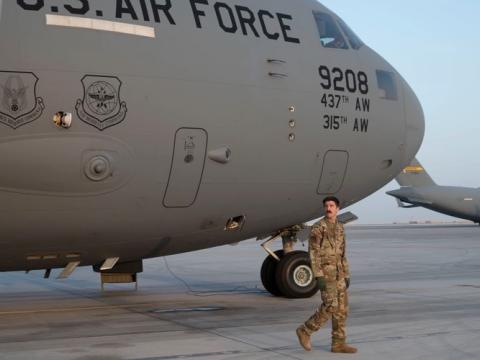The 7th Signal Command Turns One, Plows Ahead
A year into its reactivation, the 7th Signal Command (Theater) at Fort Gordon already has seen the scope of its responsibilities increase dramatically. The command still is in its early stages, but before reaching full operational capability, it will assume responsibility for thousands more employees and numerous resources. Its mission has a key role in the transformational U.S. Army, affecting soldiers in the
The 7th Signal Command began its phased stand-up July 14, 2008, and completed the Cadre Phase on January 9, 2009. The Army conducted a formal activation ceremony in March. The command now is in phase two, initial operational capability, which will be complete on September 30. Phase three, full operational capability, begins October 1 and carries through 2010. October 1 will be a major date for the command because it also takes administrative control of the continental United States (CONUS)-based Army Installation Command Director of
Originally, 7th Signal Command only was tasked to have operational assignment of these centers, but as the command progressed through its first six months of existence, the Army decided it should take assignment of the DOIMs. The change means that instead of having only technical control of the DOIMs, the command will have full control of them, including personnel and resources, thus greatly increasing its responsibilities.
In the next three years, additional DOIMs from other Army commands such as Army Materiel Command also will migrate to 7th Signal Command. “Our success so far has led to the expansion of our mission,” explains Dennis Sheppard, civilian deputy to the commanding general and senior technical adviser for the 7th Signal Command. He says that having the DOIMs fall under the command changes his organization’s focus, and he believes having a common command and control element of information technology assets in CONUS is a good move.
Since the command’s reactivation, much of its activities have focused on building its team as well as command relationships within CONUS. Its main mission is to operate and defend the LandWarNet in CONUS, which encompasses approximately 700,000 users. “That’s a big chunk,” Sheppard says. As the Army transforms into a versatile expeditionary force, the Chief of Staff of the Army has said the LandWarNet must adjust to support that expeditionary format. “The 7th Signal Command is actually responsible for the transformation in the CONUS,” Sheppard explains.
The
Sheppard shares that the command’s main focus for the future will be implementing the Global Network Enterprise Construct (GNEC) in CONUS. “That’s a huge effort we’re working now,” Sheppard says. He explains that the construct will enable warfighters to move seamlessly from generating force status into the operational force because the GNEC allows the transparent movement of personnel across the globe. E-mail addresses, telephone numbers and other network pieces will transfer along with soldiers, eliminating the need to deactivate old ones and set up new ones at each duty station. The vision of the GNEC is to transfer those services such as e-mail that the DOIMs now provide to the enterprise level. “I think the GNEC, the construct itself, is absolutely the thing the expeditionary force needs, and the 7th Signal Command is playing and will play a vital part in making that happen,” Sheppard says.
The command’s various efforts affect more than only soldiers. “Actually, everything we do affects pretty much all organizations in CONUS,” Sheppard states. Other military branch personnel residing on an Army base are influenced by 7th Signal Command resources. As Army posts transition to joint bases, the command sometimes will operate the network for other forces directly on the command’s network. Installations including Fort Sam Houston, Fort Lewis and Fort Eustis are becoming Army-Air Force posts sometimes with the Army and other times with the Air Force as lead agency, and the 7th Signal Command is working with the Air Force on how to operate networks at those locations.




Comments